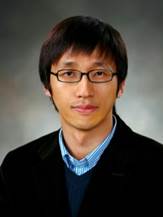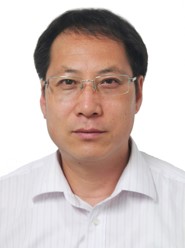Keynote Lectures
- Prof. Emilio Baglietto
- Prof. Chuan-Hua Chen
- Prof. Catherine Colin
- Prof. Iztok Golobic
- Prof. Hyungdae Kim
- Prof. Tomoaki Kunugi
- Prof. Xuehu Ma
- Prof. Matthew McCarthy
Speaker Details and Abstracts:
 |
Prof. Emilio Baglietto Department of Nuclear Science and Engineering Massachusetts Institute of Technology Cambridge, MA, USA
|
Keynote Title: "A New Approach to Subgrid Boiling Closures for CFD… towards the DNB Grand Challenge"
A novel subgrid scale model is proposed to accurately predict the temperature and heat flux for subcooled flow boiling at the wall in CFD simulations. Comparisons between numerical predictions and experimental data have illustrated a high sensitivity of critical closure parameters on local conditions, which are not replicated in the experiments. This evidence suggests the need for an improved, more general boiling heat transfer model that has a more consistent dependency on local parameters and includes an improved description of flow effects on surface boiling. The new model is based on an original experimental-based mechanistic approach, and attempts to capture all physical phenomena that effect heat transfer and occur at the heated surface. The new method aims to extend the generality and applicability of boiling models in CFD through a fully mechanistic sub-grid representation, where all model parameters are theoretical based.
 |
Prof. Chuan-Hua Chen Department of Mechanical Engineering and Materials Science Duke University Durham, NC, USA
|
Keynote Title: "Self-Propelled Jumping Condensate: From Thermal Rectification to Hotspot Cooling"
When two drops coalesce into one, the overall surface area is reduced and the released surface energy can be converted to kinetic energy, leading to self-propelled motion of the merged drop. In this talk, we will discuss various strategies to induce such autonomous motion, starting from the self-propelled jumping upon drop coalescence on superhydrophobic surfaces. After an illustration of the physical mechanism using interfacial flow simulations, we will demonstrate a few applications of the jumping condensate in phase-change heat transfer, including thermal rectification and hotspot cooling.
 |
Prof. Catherine Colin University of Toulouse Toulouse, France
|
Keynote Title: "Flow Boiling in Pipe in Normal and Microgravity Conditions"
Flow boiling in a tube of 6mm diameter has been studied in vertical up-flow on ground and in microgravity conditions during parabolic flight experiments in aircraft. The test section is a sapphire tube of 6 mm ID and 8 mm OD. It is coated on its outer wall by a ITO deposite heated by Joule effect. The heat transfer coefficient is measured thanks to Pt100 sensors located on the heated surface. Since the test section is transparent, high speed video pictures of the flow are taken for the determination of the flow patterns. Capacitance probes have been designed for the measurements of the mean void fraction in the pipe section, and the liquid film thickness in annular flow. The quality is determined along the test section by an energy balance. The pressure drop is also measured along the test section and downstream along an adiabatic test section. The experimental results concern the wall shear stress, the heat transfer coefficient, the void fraction. A special attention is paid to the annular flow regime often encountered in space applications. For this flow pattern we quantified the liquid film thickness, the wall and interfacial shear stresses and the heat transfer coefficient. It was found that the film thickness is lower in microgravity than in upward flow. At high mass flux (greater than 200 kg/m2s), no nucleate boiling was observed in the liquid film and the heat transfer coefficient is well predicted by a convective heat transfer model. Wall friction and heat transfer coefficients are similar in normal and microgravity conditions, whereas the interfacial shear stress is much lower in microgravity. At lower mass flux below 100 kg/m2s, the effect of gravity becomes more significant. The present results are discussed compared to the results of the other teams working on flow boiling in microgravity and to different models of the literature.
 |
Prof. Iztok Golobic Department of Mechanical Engineering University of Ljubljana Ljubljana, Slovenia
|
Keynote Title: "Micro-patterned Superhydrophobic/Superhydrophilic Surfaces for Enhanced Heat Transfer During Nucleate Boiling"
Boiling is one of the most important mechanisms of heat transfer and is very complicated phenomena. What do we really know about nucleate boiling? This keynote presents the review of our studies in the field of nucleate boiling phenomena and heat transfer enhancement.. Pool nucleate boiling is examined trough the mechanistic numerical simulations and compared with experimental spatio-temporal data. Growth of an isolated bubble, horizontal coalescence events and chain coalescence events between bubbles of dissimilar size were examined under low and high heat flux conditions in saturated and sub-cooled pool boiling using synchronized high-speed IR thermometry and high-speed video. While infrared thermometry suffers from diffraction-limited resolution, fluorescence-based thermometry for transient temperature imaging at sub-micron scales using temperature sensitive erbium/ytterbium co-doped transparent glass-ceramics with excellent photo-thermal stability is presented as a step ahead. A method to produce superhydrophobic/ superhydrophilic surface micropattern for enhanced heat transfer is described. Superhydrophobic polydimethylsioxane-silica film is spray coated on the surface and then laser treated to become locally superhydrophilic. Optimization of the micropatterned surfaces for heat transfer enhancement during boiling process will be discussed.
 |
Prof. Hyungdae Kim Department of Nuclear Engineering Kyung Hee University Republic of Korea
|
Keynote Title: "Integrated Visible- and Infrared-Based Experimental Methods for High Resolution Studies of Boiling and Condensation"
Numerous experimental methods for boiling and condensation have been developed over several decades. However, previous experimental methods had limitations in simultaneously measuring instantaneous and localized liquid-vapor phase distribution and heat flux on a wall, which are necessary for the accurate understanding and modeling of boiling and condensation. In this talk, an integrated visible- and infrared-based experimental methods will be introduced to simultaneously acquire high-resolution liquid-vapor phase distribution and heat flux data on a wall. Representative experimental data to display fundamental mechanisms of nucleate boiling, droplet collision, and film condensation will be presented. Also, a discussion will be followed on how high-resolution experimental data can be utilized to validate and improve prediction models and numerical simulation results of boiling and condensation.
 |
Prof. Tomoaki Kunugi Department of Nuclear Engineering Kyoto University Kyoto, Japan
|
Keynote Title: "Direct Numerical Simulation Studies on Boiling Phenomena"
A direct numerical simulation (DNS) of the boiling phenomena is one of the promising approaches in order to clarify the boiling heat transfer characteristics and discuss their mechanisms. During these decades, many DNS procedures have been developed according to the recent high performance computers and computational technologies. In this paper, the state-of-the-art of DNS on the boiling phenomena during latest two decades is briefly reviewed at first, and then, the non-empirical boiling and condensation models proposed by the author combined with the MARS (Multi-interface Advection and Reconstruction Solver developed by Kunugi, 2001) is introduced and some DNS results will be presented.
Ref.: T. Kunugi, MARS for Multiphase Calculation, Computational Fluid Dynamics J., 9 (1), 563-571, 2001.
 |
Prof. Xuehu Ma Institute of Chemical Engineering Dalian University of Technology Dalian, China
|
Keynote Title: "Condensation heat transfer enhancement: dancing droplets effect"
The dynamic droplet behaviors, such as their coalescence, departure, and out-of-plane jumping, looking like the dancing of droplets can lead to great impact on the dropwise condensation (DWC) heat transfer. This talk will briefly introduce the fundamentals of the wetting feature of droplet on textured surfaces, and then stressed on the theoretical modeling, numerical simulation and experimental investigations of the effect of the dynamic droplet behavior on the DWC process, and the condensation heat transfer enhancement for the pure steam and steam/air mixture vapor.
A surface free energy difference model was proposed to predict the possible condensation modes at certain condensing conditions. The dynamic evolution of droplet during the droplets coalescence and departing-off were tested for the dropwise condensation heat transfer for pure steam and steam/air mixtures, and for the cases of ultra-lower pressure. The hydrophobic-hydrophilic hybrid surfaces were prepared to monitor the droplet drainage. Droplet on hydrophobic region is merged into the liquid film on hydrophilic region, so droplet drainage radius significantly decreases and heat transfer characteristics on hydrophobic region increases significantly. A superhydrophobic surface was used to experimentally investigate the condensation modes and the condensation heat transfer. Droplet out-of-plane jumping phenomenon was observed on superhydrophobic surface and micro finned tube during DWC of steam in the presence of air.
 |
Prof. Matthew McCarthy Department of Mechanical Engineering and Mechanics Drexel University Philadelphia, PA, USA
|
Keynote Title: "Biotemplated Nanostructures for Enhancing CHF and HTC during Pool Boiling"
This talk will demonstrate the use of the Tobacco mosaic virus (TMV) as a biological template to create conformal coatings of metallic nanostructures on a variety of surface materials for enhancing pool boiling heat transfer. Nature offers unique options for materials synthesis based on the novel functionalities of biological structures such as proteins, DNA, viruses, and bacteria. The advantages of utilizing biological building blocks to guide the assembly of inorganic materials include low cost, inherent self-assembly properties, functional groups to catalyze particle growth, and the ability to tune structure through genetic modifications. Using scalable nanomanufacturing techniques based on the self-assembly and metallization of the TMV, conformal coatings of viral nanostructures have been implemented for the creation of superhydrophilic surfaces with enhanced wickability. Using these multiscale surface coatings, the effects of wickability as well as variations of in-plane wettability and thermal conductivity have been investigated, leading to substantial increases in CHF and HTC.

